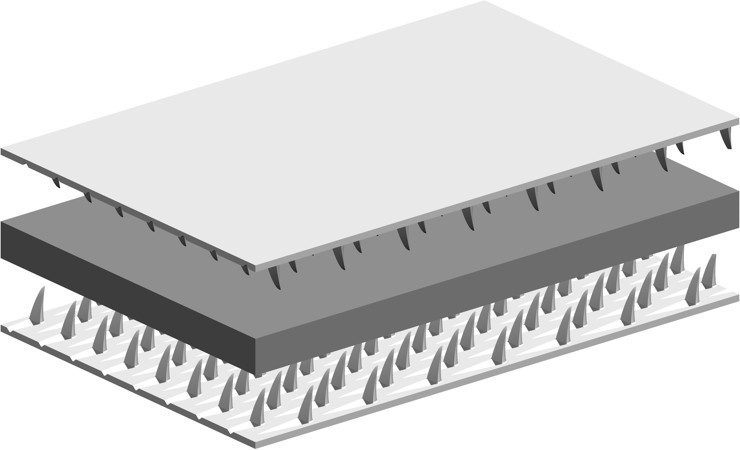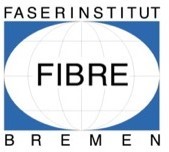PAGE CONTENTS
Objectives
The objective of the study is to develop a hybrid structure, where besides structural strength also high thermal conductivity is required. These high conductive structures can replace conventional metallic elements, which are heavy due to their limited thermal conductance, and in selected cases even two-phase heat transportation systems. Outstanding weight and cost reduction may be achieved for example in spacecraft radiators, since the use of heat pipes can be avoided or reduced. The compound can also be envisaged to reduce weight in spacecraft thermal management systems, which are typically constrained by thermal limitations. Examples are passive deployable radiators, thermal doublers and housings of electronic units. The principle of the hybrid structure is illustrated in the following figure:
The structure consists of a high-conductive graphite layer, which is sandwiched between two aluminum alloy sheets. The latter have integrated hooks, which penetrate into the high-conductive layer, in order to increase the mechanical strength and the out- of-plane thermal conductivity of the compound.
Challenges
The graphite layer consists of >50 foils, each 40 mm thick. The foil is delivered in endless rolls of 210 mm width. The largest challenge is to stack more than 50 foils and bond them together. Bonding line should be thin as to avoid increase of the out-of-plane conductivity and the overall thickness of the stack. Technologies investigated are adhesive-less direct bonding and adhesive application by spraying, dispensing or jetting.
Current Status
In the current project we successfully completed a feasibility study. In this context we manufactured hybrid structure samples to evaluate the thermal conductivity (in-plane, out-of-plane at different temperatures), the CTE of the graphite stack and the complete hybrid structure and the flexural strength. Stacks are fabricated by inserting between each foil a 5 mm thick hotmelt adhesive. All results were as expected. Based on test results a thermal analysis was conducted on a typical Telecom payload radiator, which showed that the entire, currently used heat pipe network can be deleted by using the hybrid structure as inner radiator face sheet.
Companies



